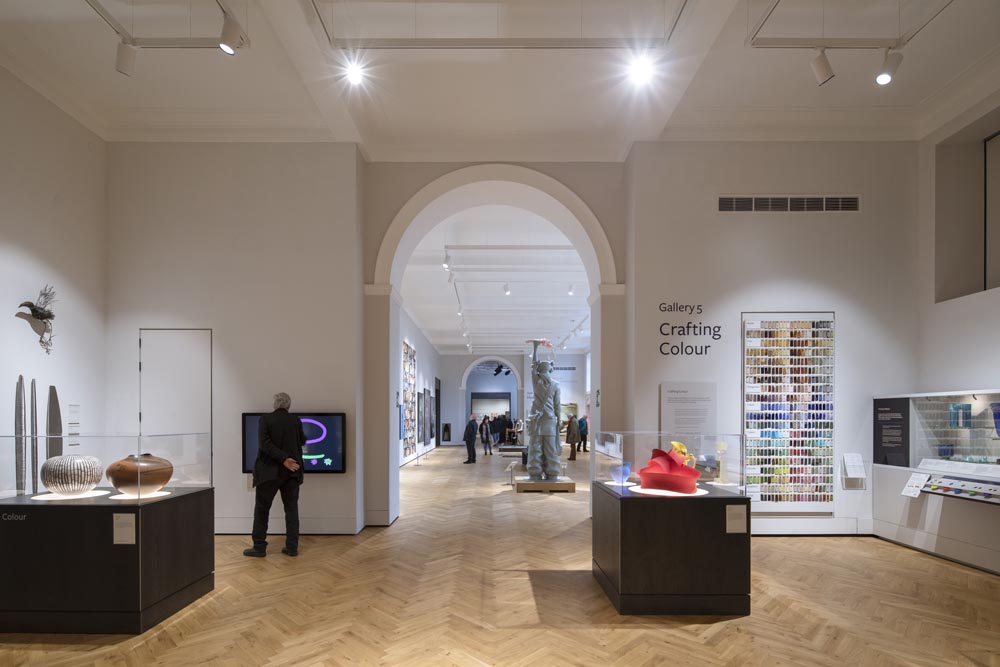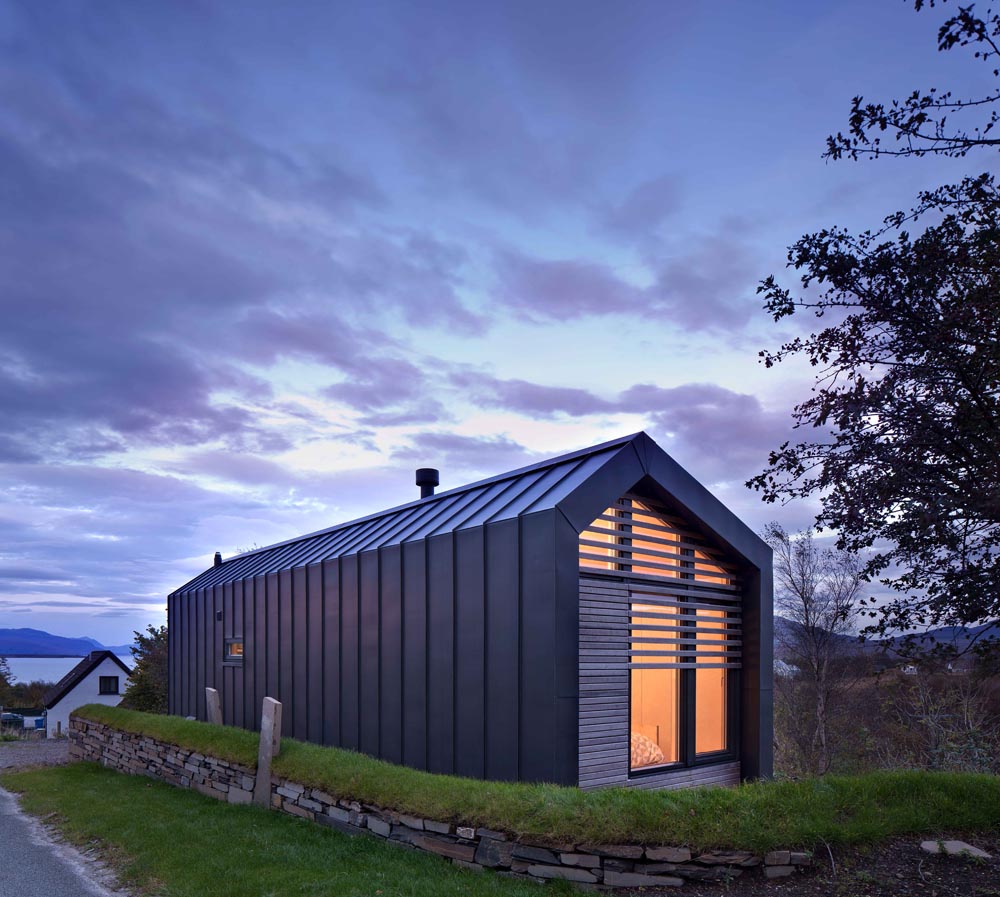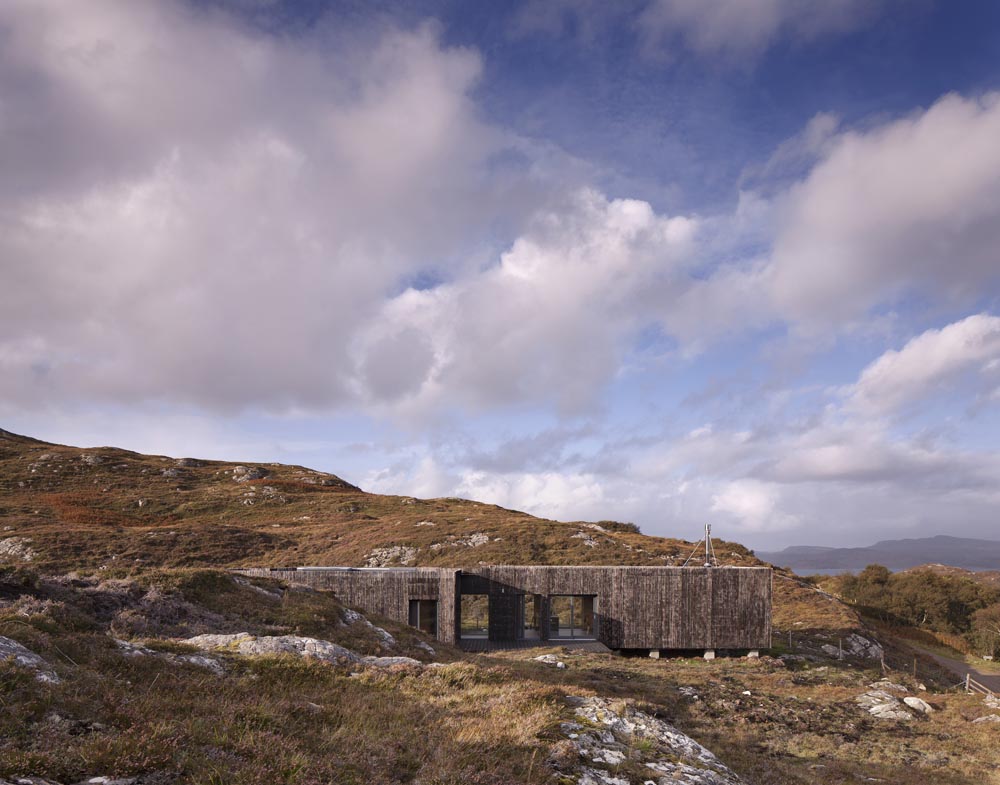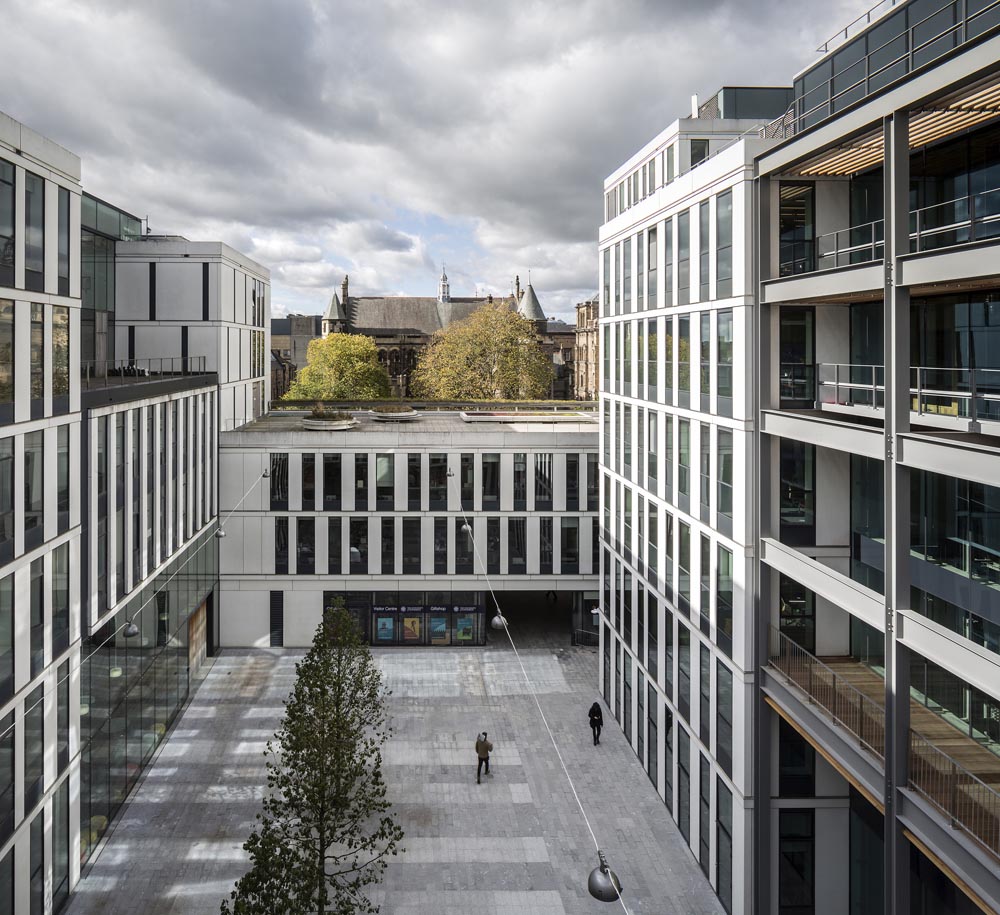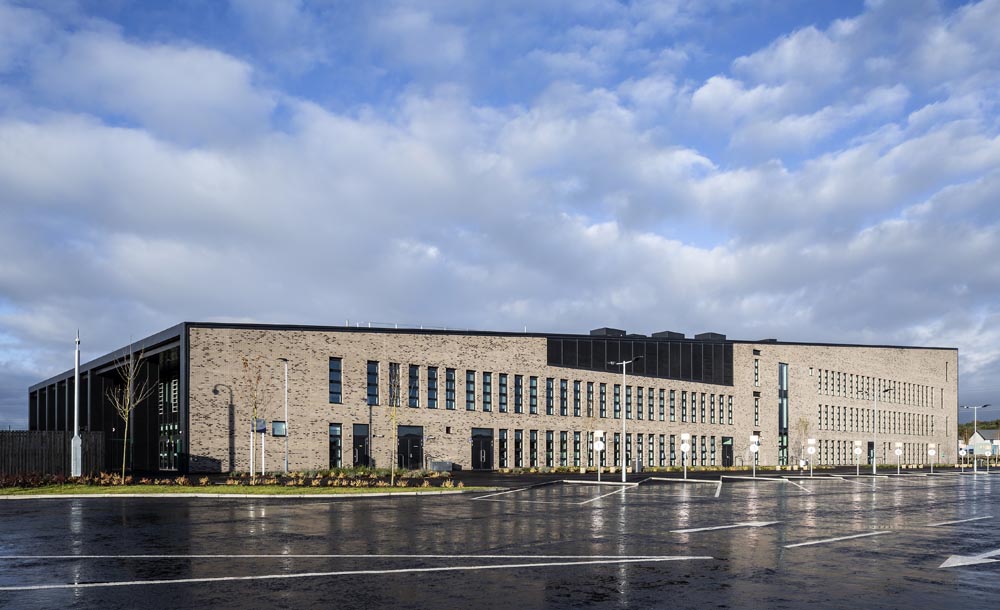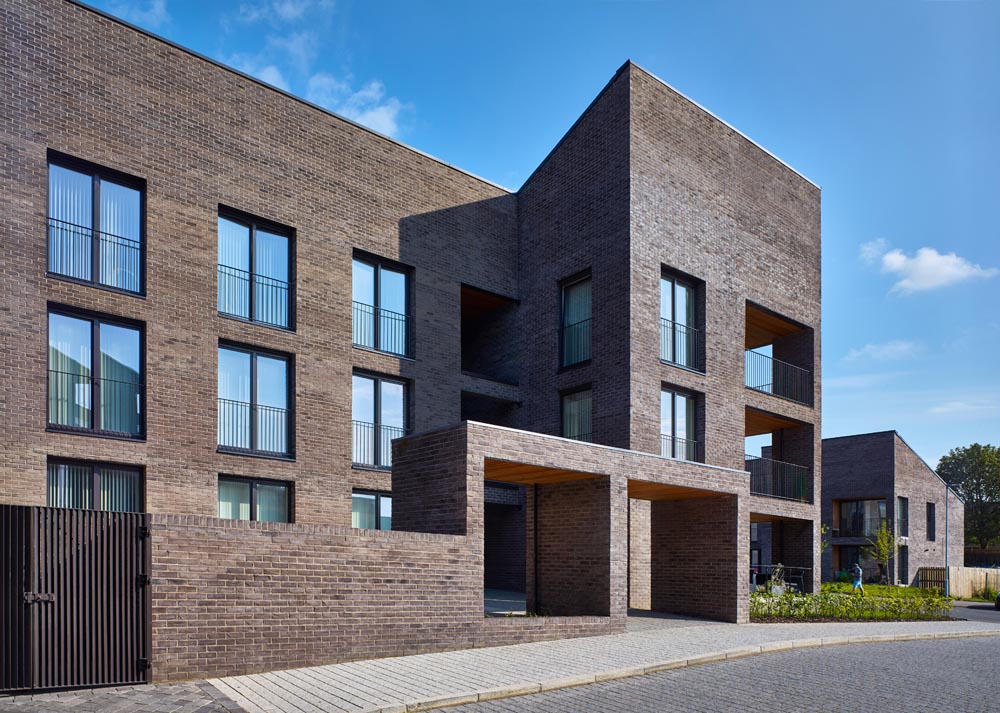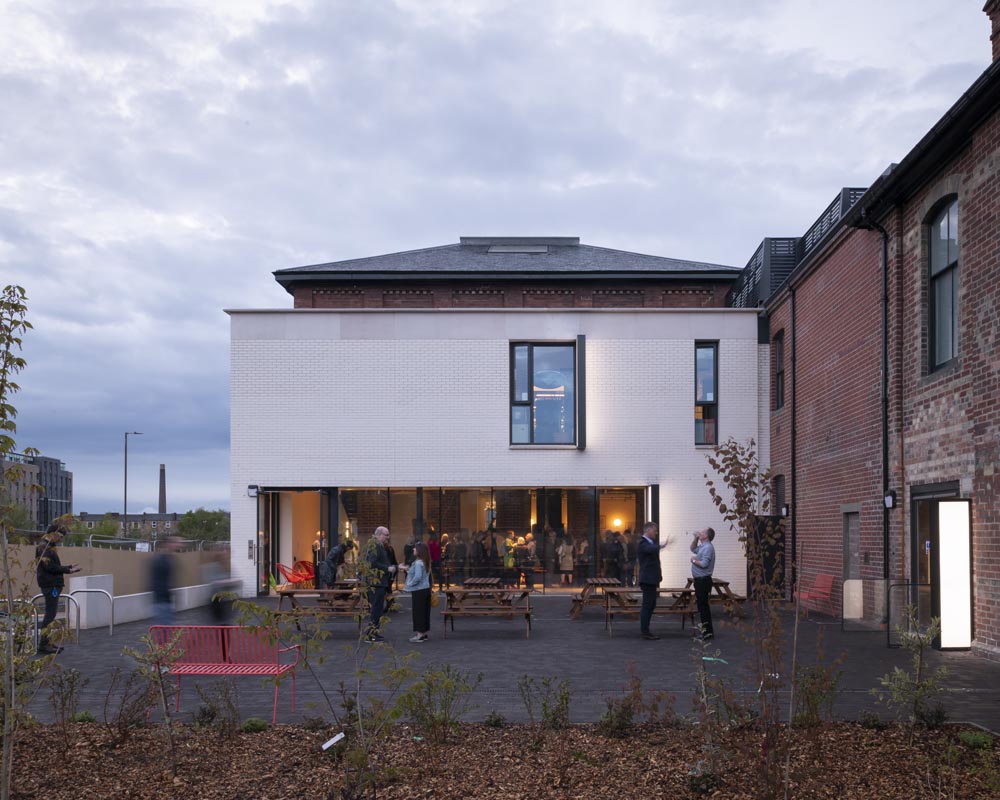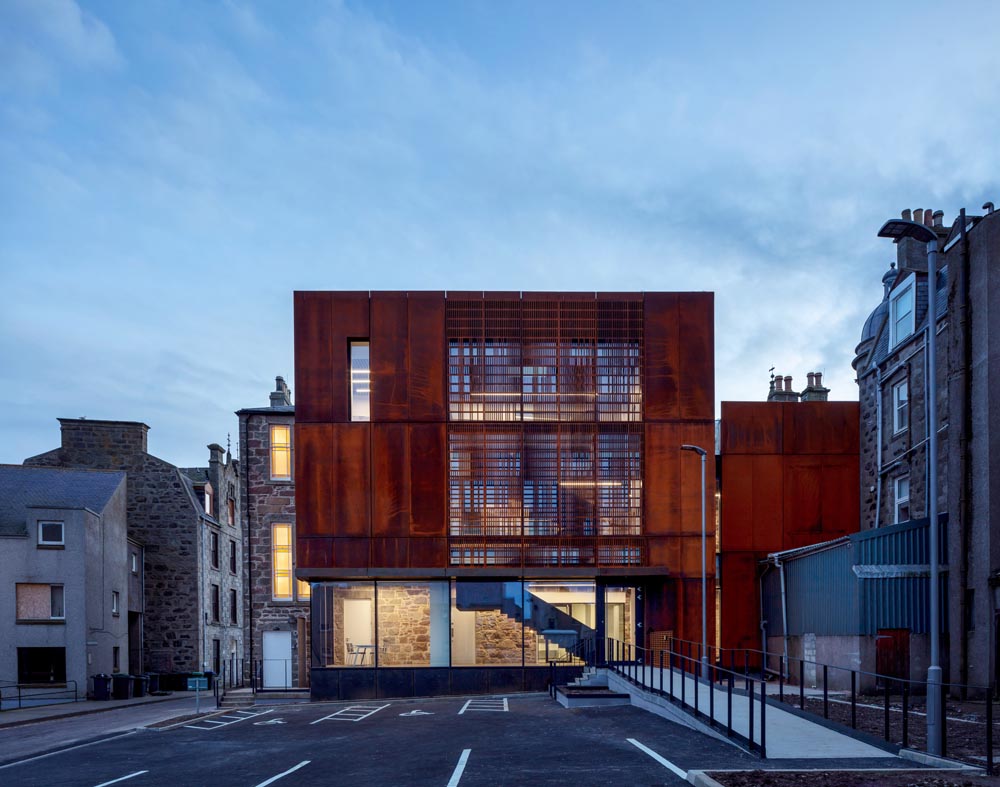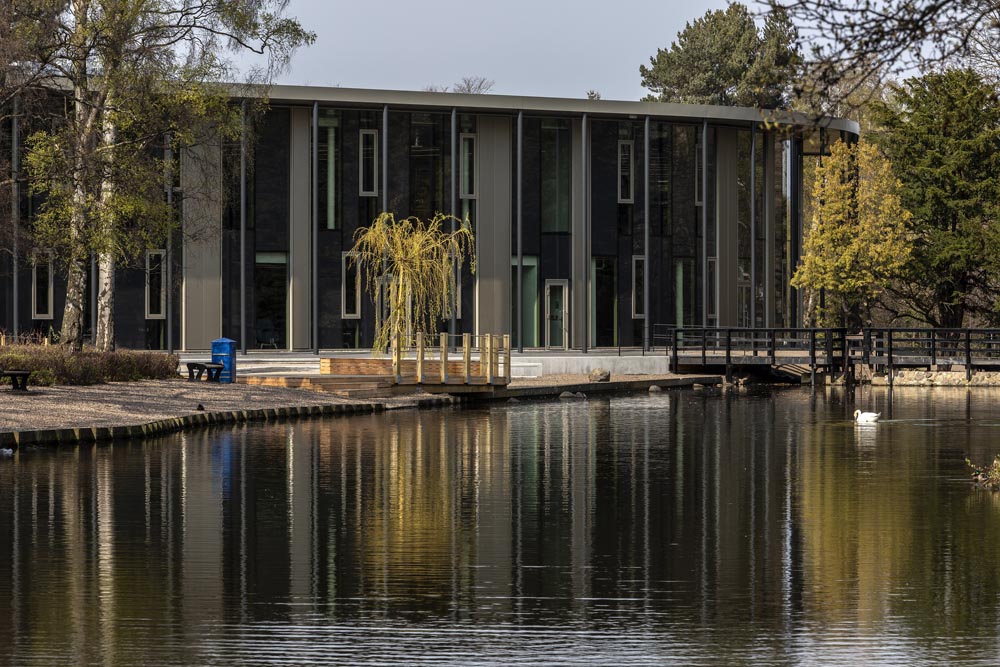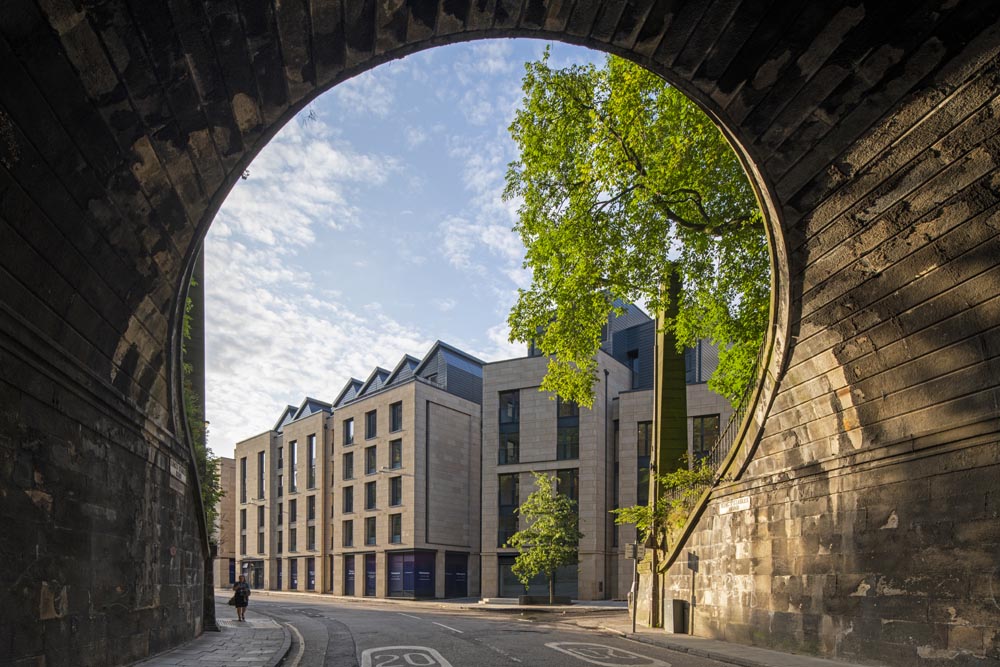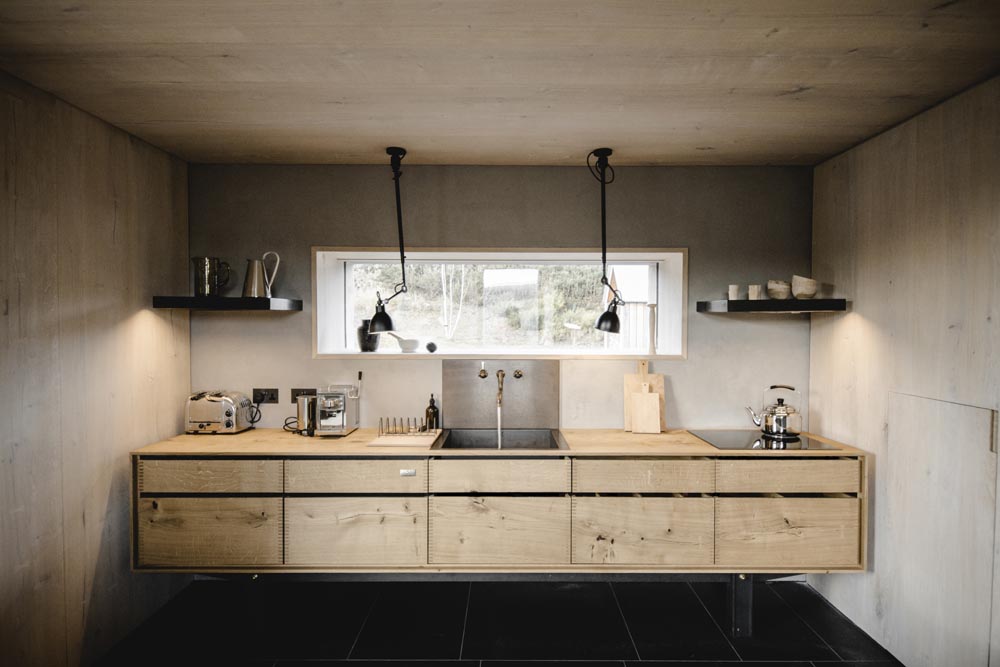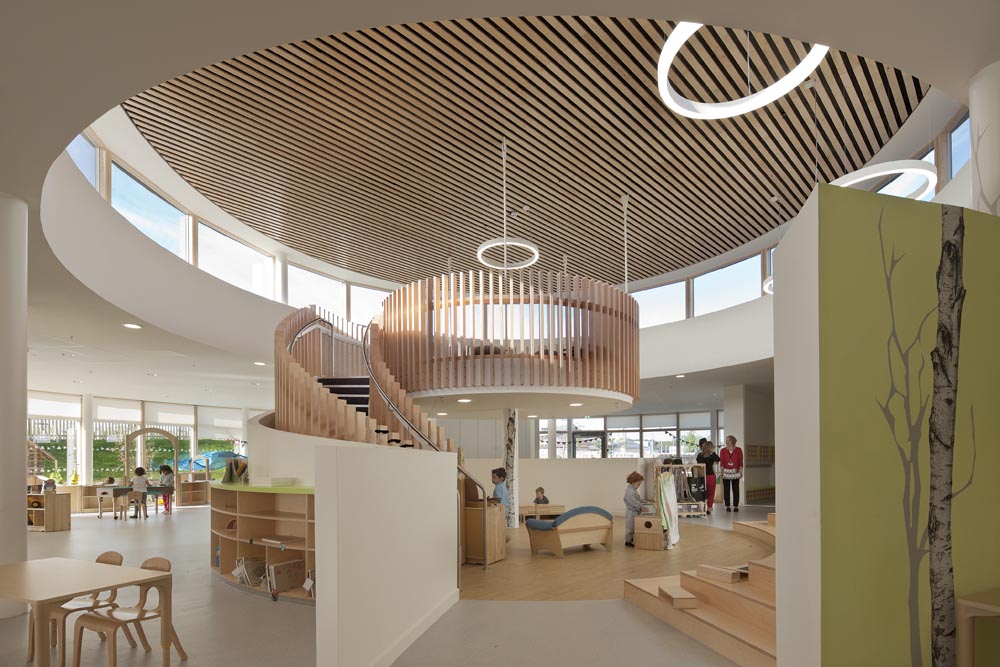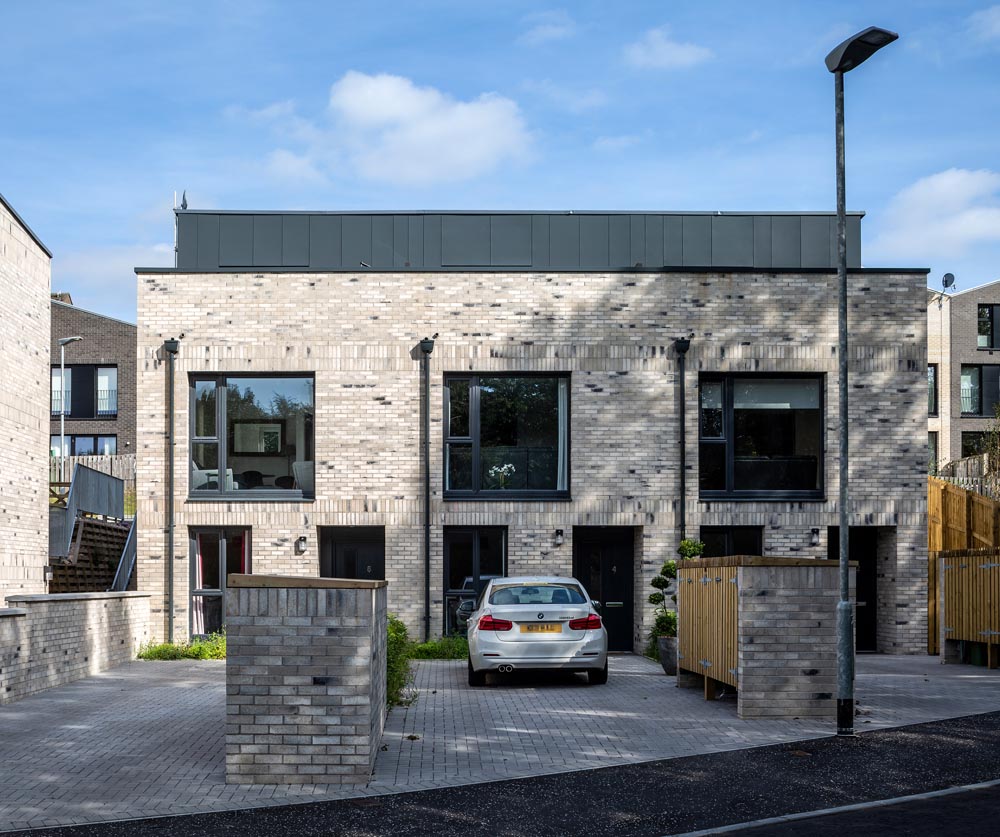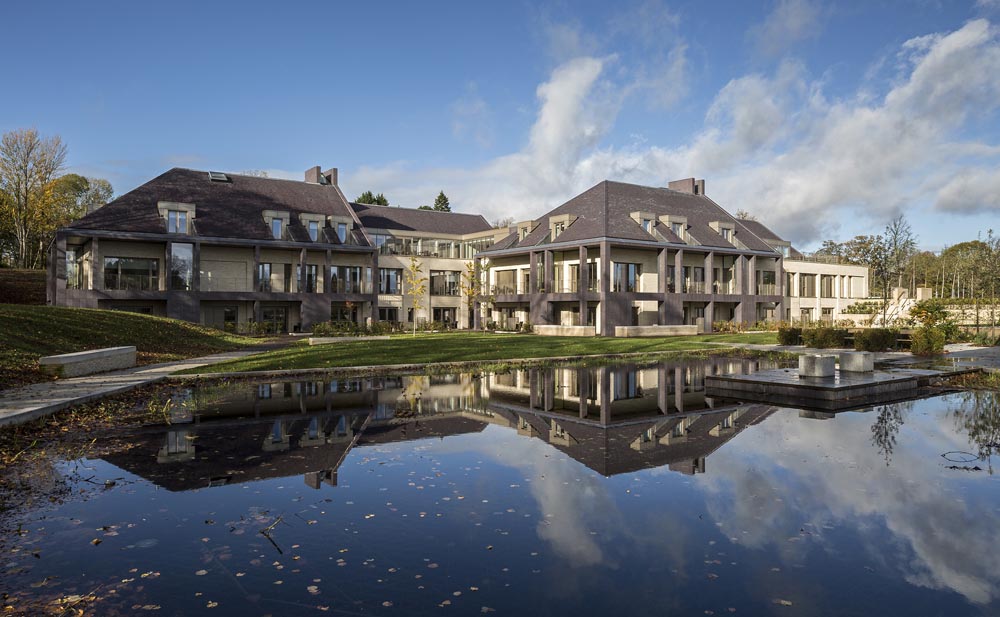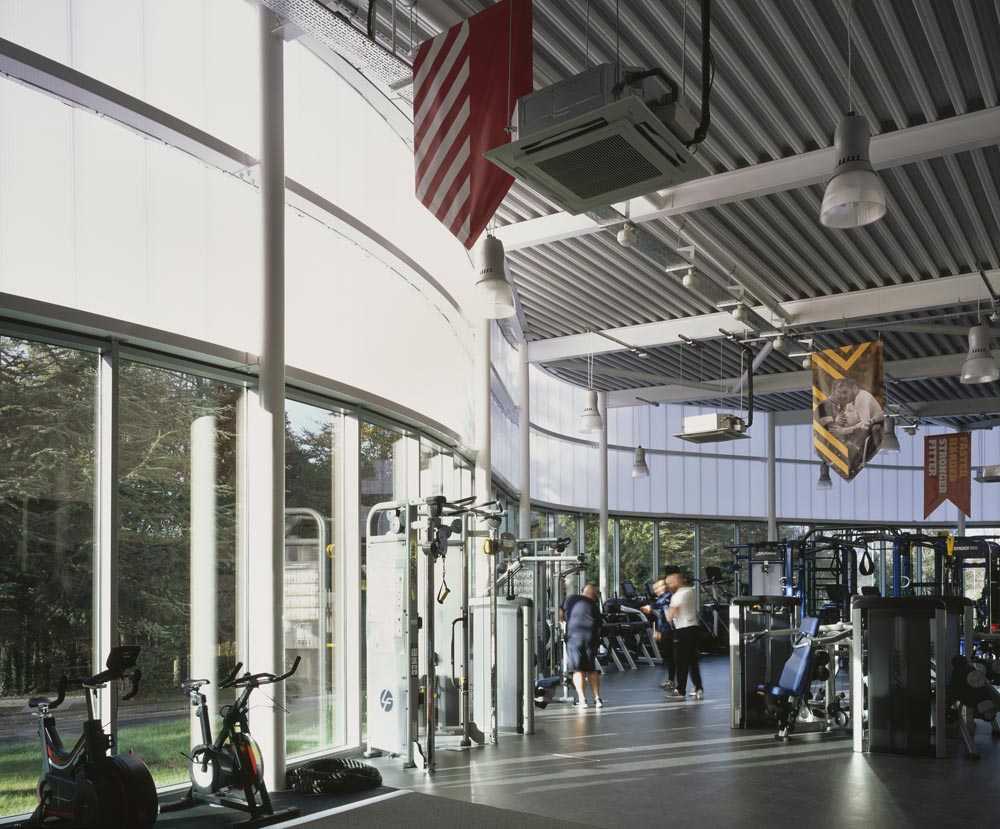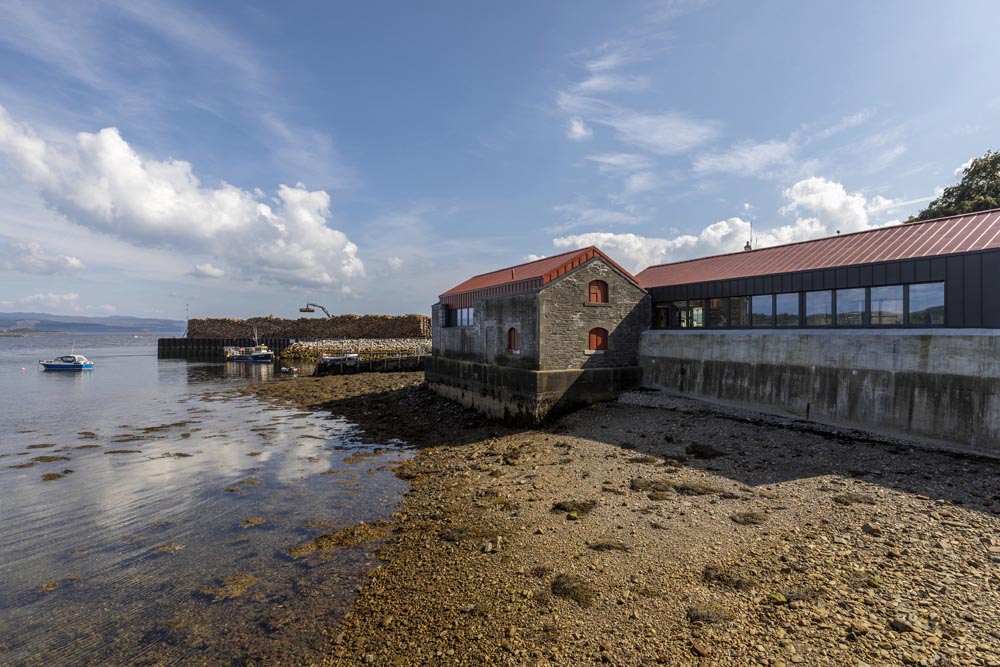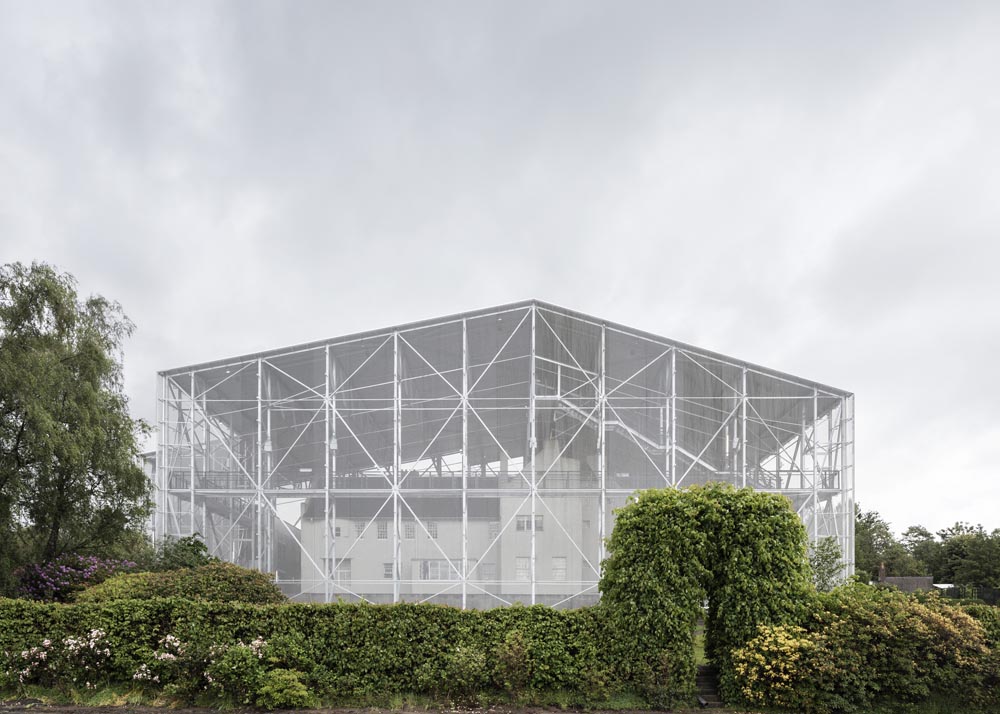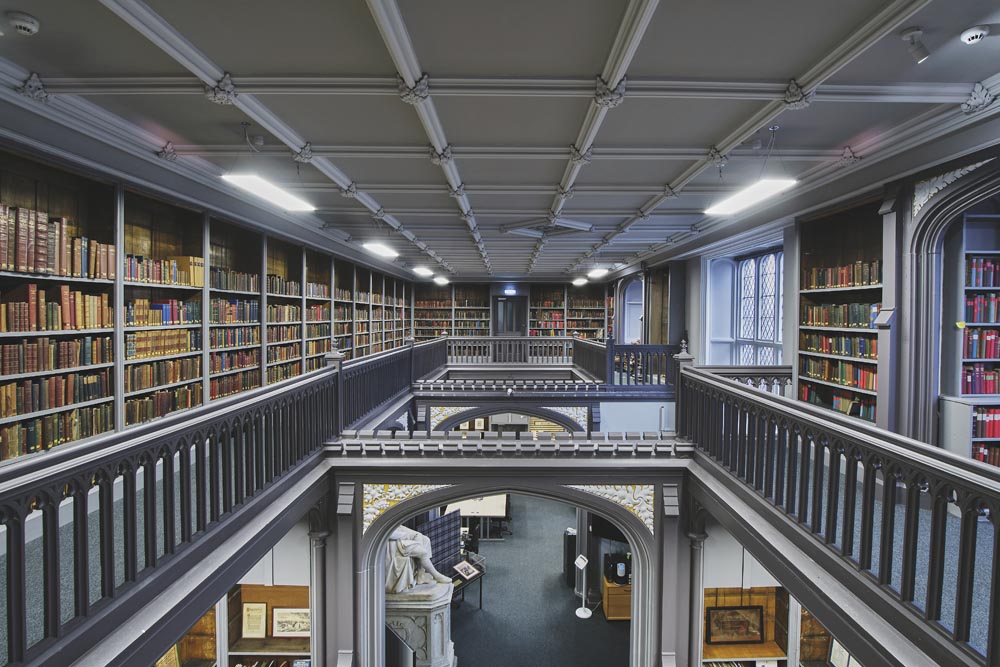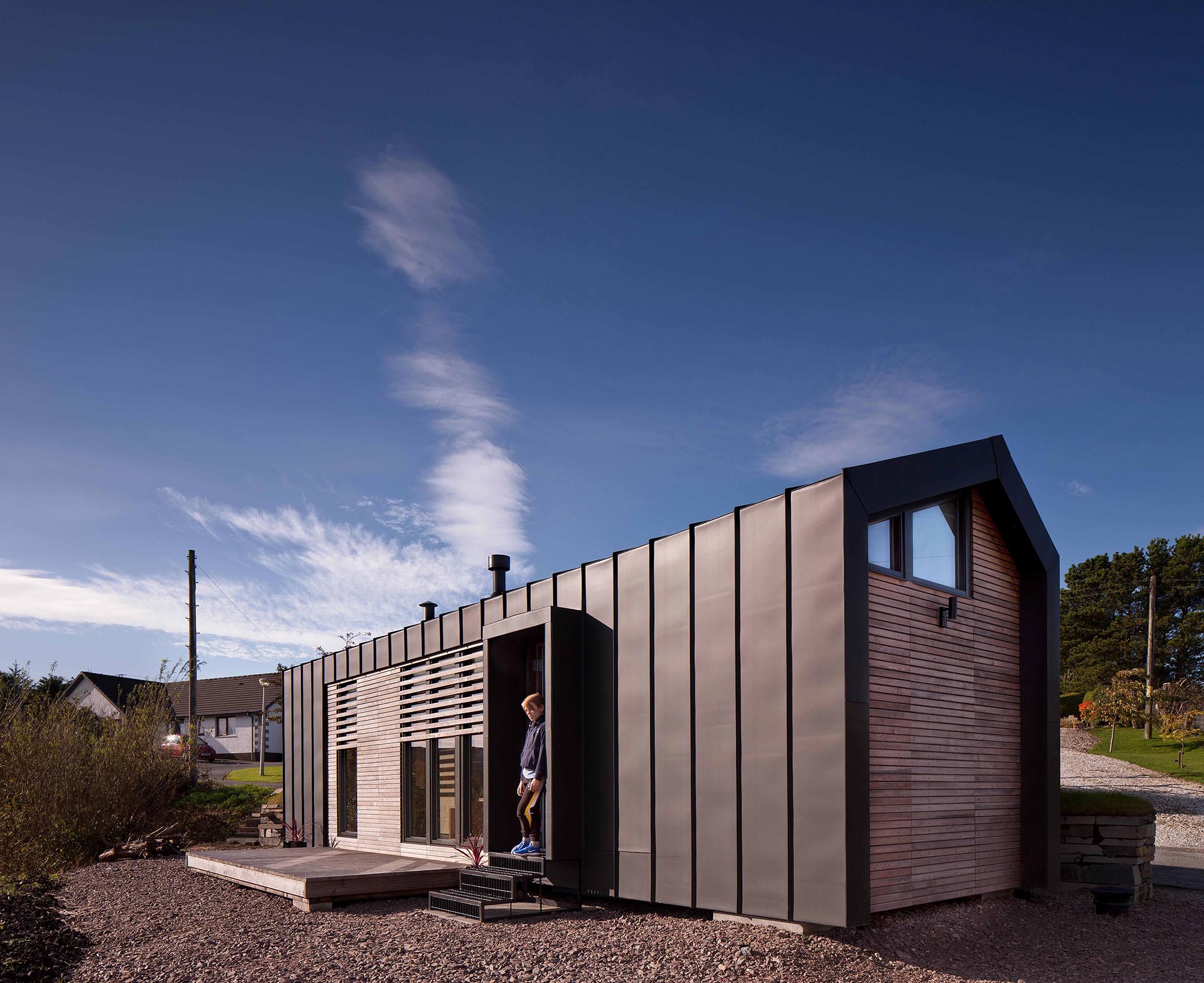
Altarf: Isle of Skye
Ann Nisbet Studio
Located on the Isle of Skye, this mobile micro home prototype was developed as a small, lightweight, thermally efficient, movable house, designed for the rural landscape.
The site located in the crofting community of Blackpark, originally formed part of the client’s wider croft. Now separated by the single-track road that connects the community, the site consists of a small plateau,
which falls steeply to the river below. To the south and west the house captures views over the Skye landscape and to the east there are views out to Broadford bay and the small island of Pabay. Although the
site is rural, it is not an isolated site, the building forms part of a cluster of houses.
The mobile house emulates the form and proportions of traditional highland rural vernacular, long and narrow but with an asymmetrical roof. The form was also strongly influenced by the site conditions, and the relative
legislative Acts relating to the construction and transportation of mobile buildings.
The Client’s initial brief was for a ‘small but not tiny’ one-bedroom house on the site. However, after discovering that the ground conditions were poor, formed from made ground and could not support traditional
foundations, a ‘mobile house’ concept was developed.
The 30sqm house contains three main spaces, which are open to the apex, to provide a feeling of space, light and height. Each is divided by a deep storage wall, containing cupboards or other functions. The three
spaces flow together, creating a greater feeling of volume and light throughout the building.
Two large birch faced ply sliding doors can be closed over to provide privacy between the public and private spaces, should it be required.
Birch faced plywood lines the interior of the building, this was chosen for aesthetic and functional reasons. The internal cladding was carefully laid out to reduce material waste and any off cuts were reused in
shelving and other internal furnishings.
Large areas of glazing are located to the south and west, capturing the island landscape beyond and maximizing solar gain. These are over-clad with fine sections of timber to filter the summer sun, reducing the
risk of overheating.
A detachable zinc clad canopy at the entrance was added to provide protection from severe weather.
Externally, the building is clad in black standing seam zinc and untreated Siberian larch cladding, emulating materials commonly found within the rural landscape. Both external and internal materials were considered
in terms of longevity, re-use, maintenance, environmental impact and their attributes relating to deflection.
A dry-stone wall, topped with turf, grounds the building in the landscape, creating an established boundary and a positive connection with the wider Blackpark community.
The aesthetic appearance of the house at night and how it might engage with the long winter nights was considered, this island home was to feel welcoming, warm, and act as a lantern or marker in the winter landscape.
Planning in Principal was in place for a small dwelling house, however due to the constraints and uniqueness of the project, we worked closely with the Highlands and Islands Planning department, who were supportive
and interested in the wider research project.
Initially, an off-grid energy strategy was investigated, however the decision was made to connect the building to mains electricity and water, which were available very close to the site. Services can be disconnected
with ease, should the building require to be moved.
The building is well insulated. A small wood burning stove and back up electrical heating is employed, as well as a MVHR. In the future PV’s or a turbine will be introduced.
An offsite Construction strategy was employed to limit waste, reduce construction time, and to allow for work to be carried out during the winter months.
A ‘local’ focus was pursued, rather than manufacturing the building at a distance and then transporting the building to Skye, the focus was on retaining the majority of the work ‘on the island’ or within the Highlands,
therefore using local labor and skills, sourcing local materials – where possible, supporting the local economy and reducing the building’s carbon footprint.
The building was designed to allow for transportation on single track rural roads, without a police escort, and sized under the height of ‘low bridges’ to ensure that the building could be moved to a wide variety
of locations.
Once complete, the building was transported across the Skye landscape, to the site and lifted into position. In the future the building can be removed from Blackpark and travel to a new location, where its narrative
will continue.
Client
Private Client
Structural Engineer
Stuart Burke Associates
Main Contractor
Mackinnon Joinery,
Isle of Skye
Gross Internal Area
30m²
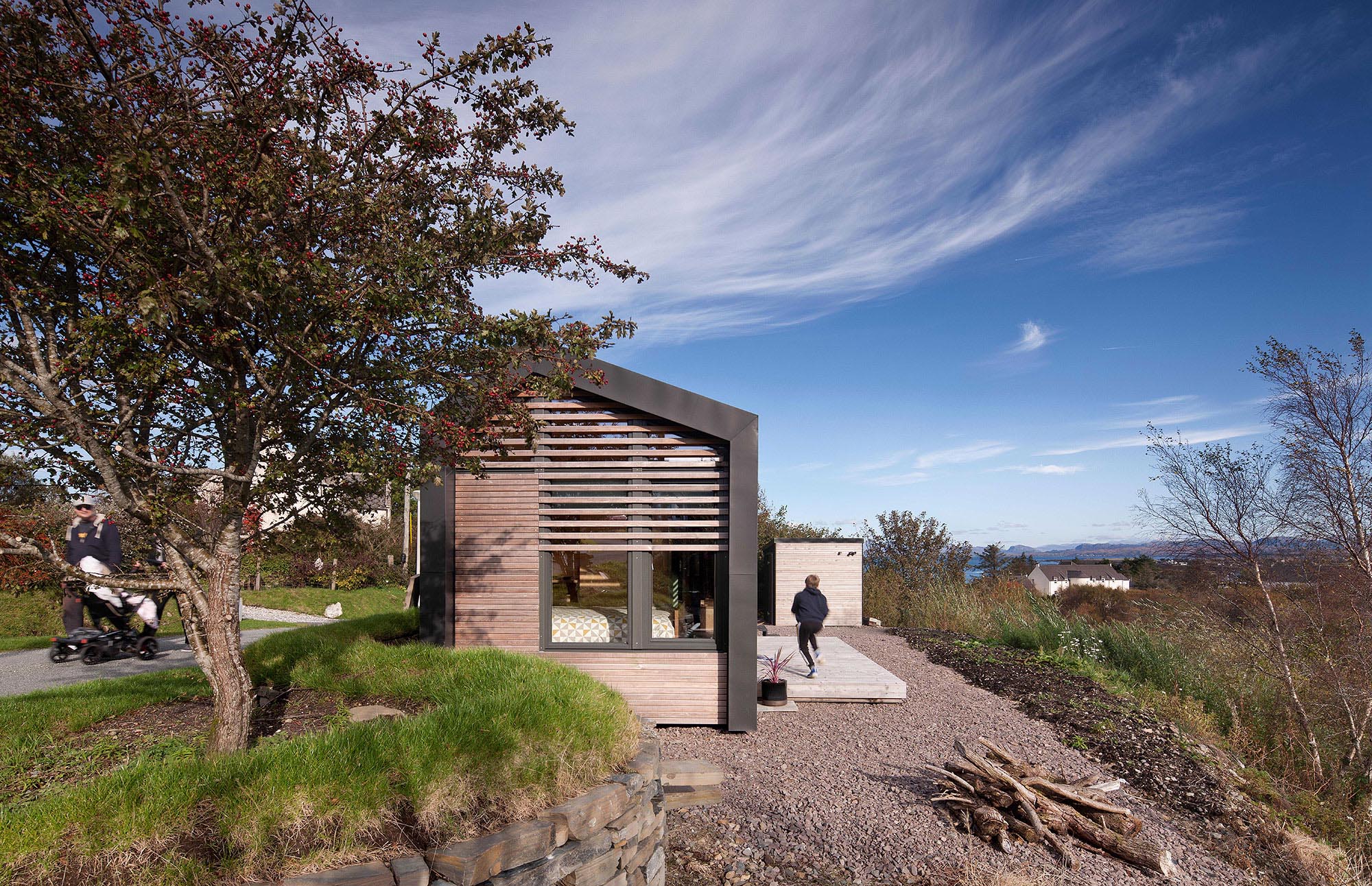
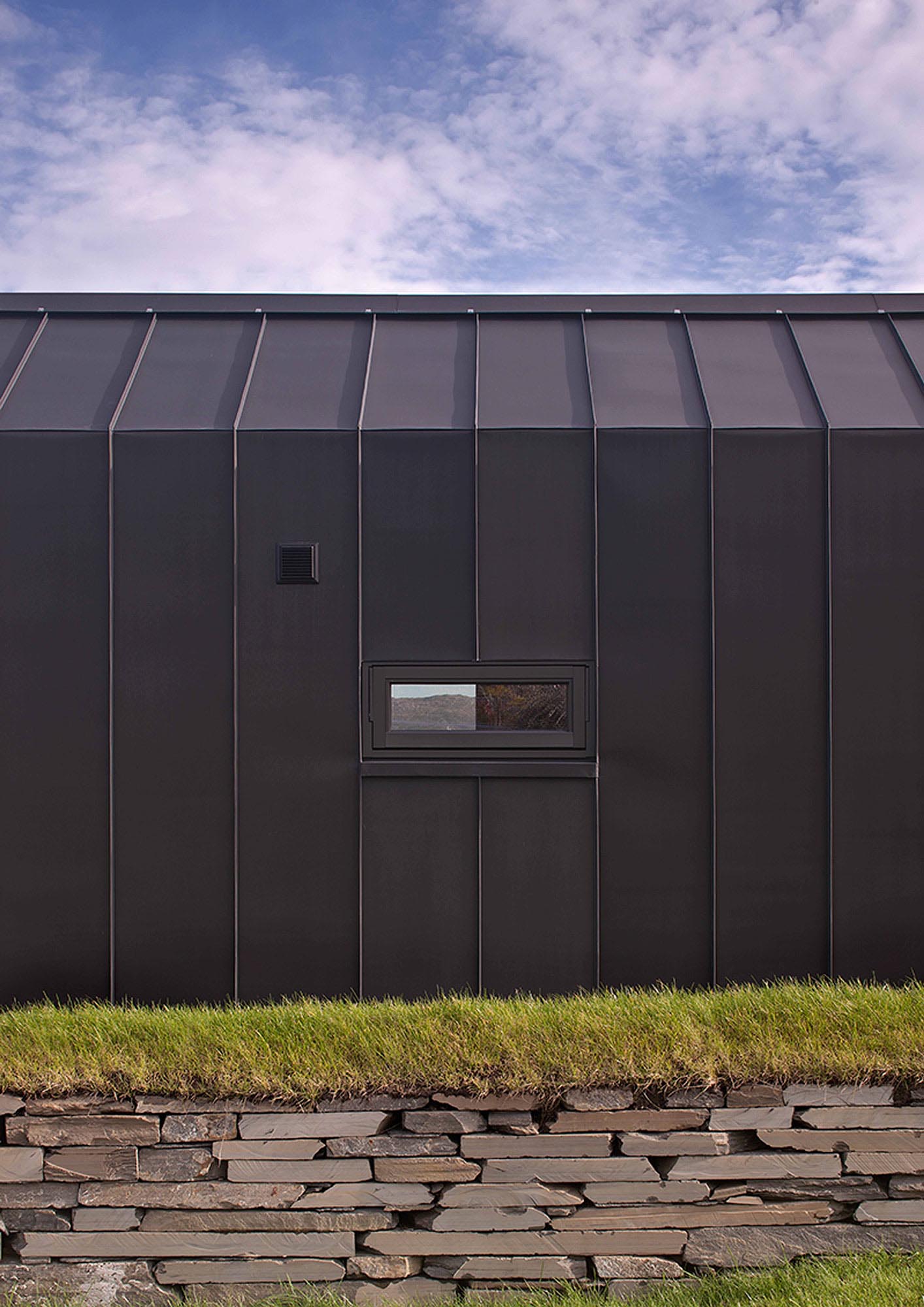
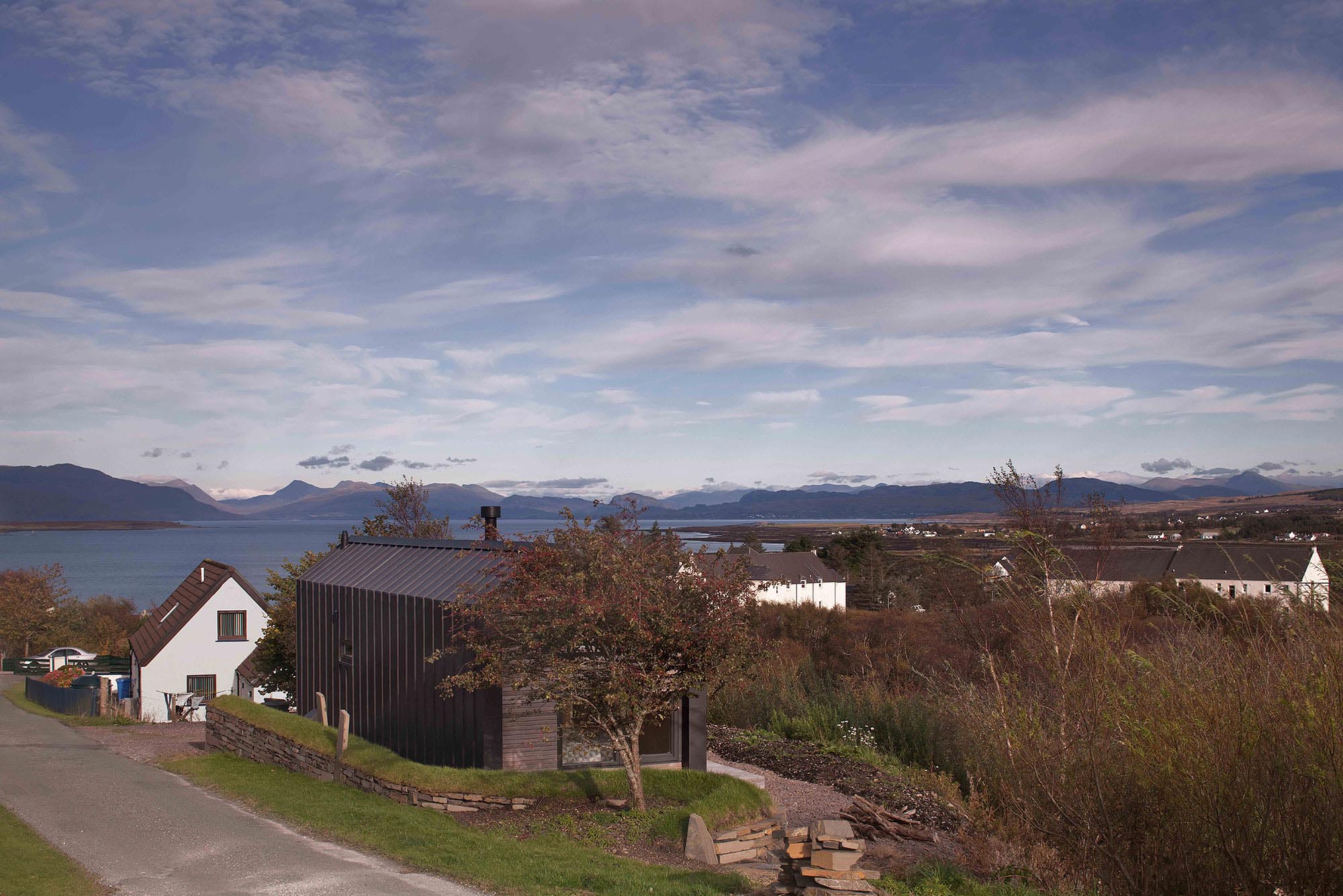
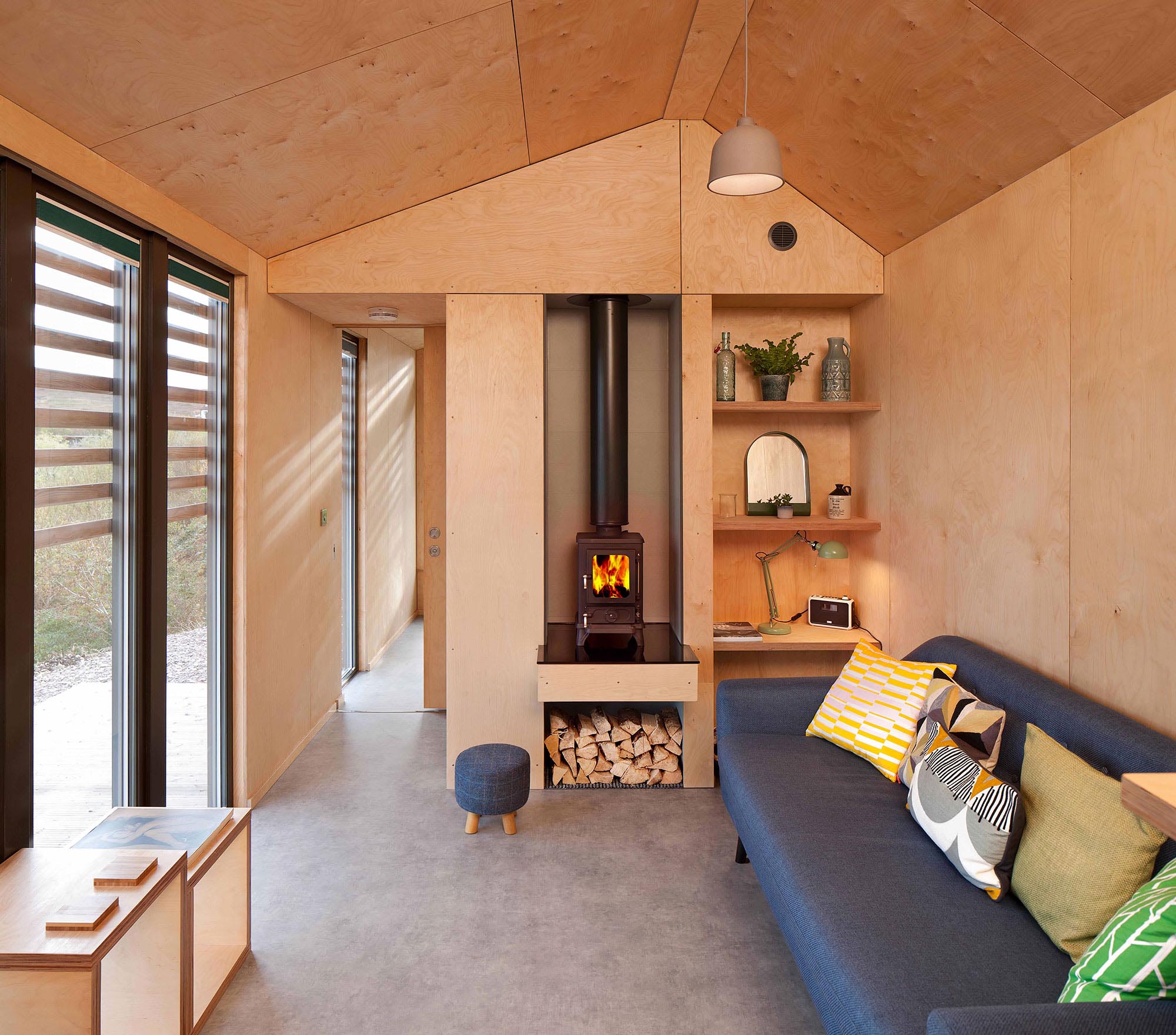
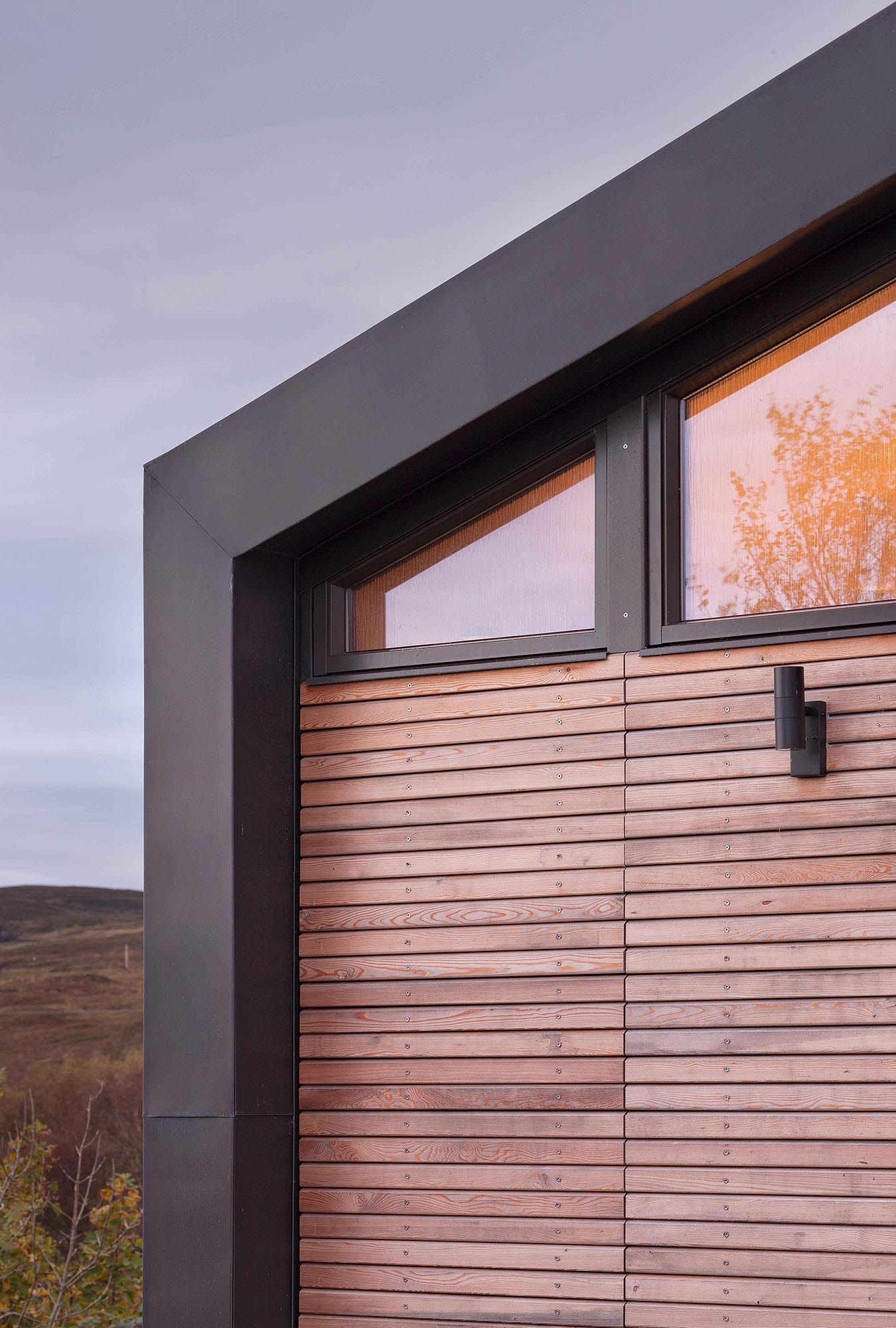
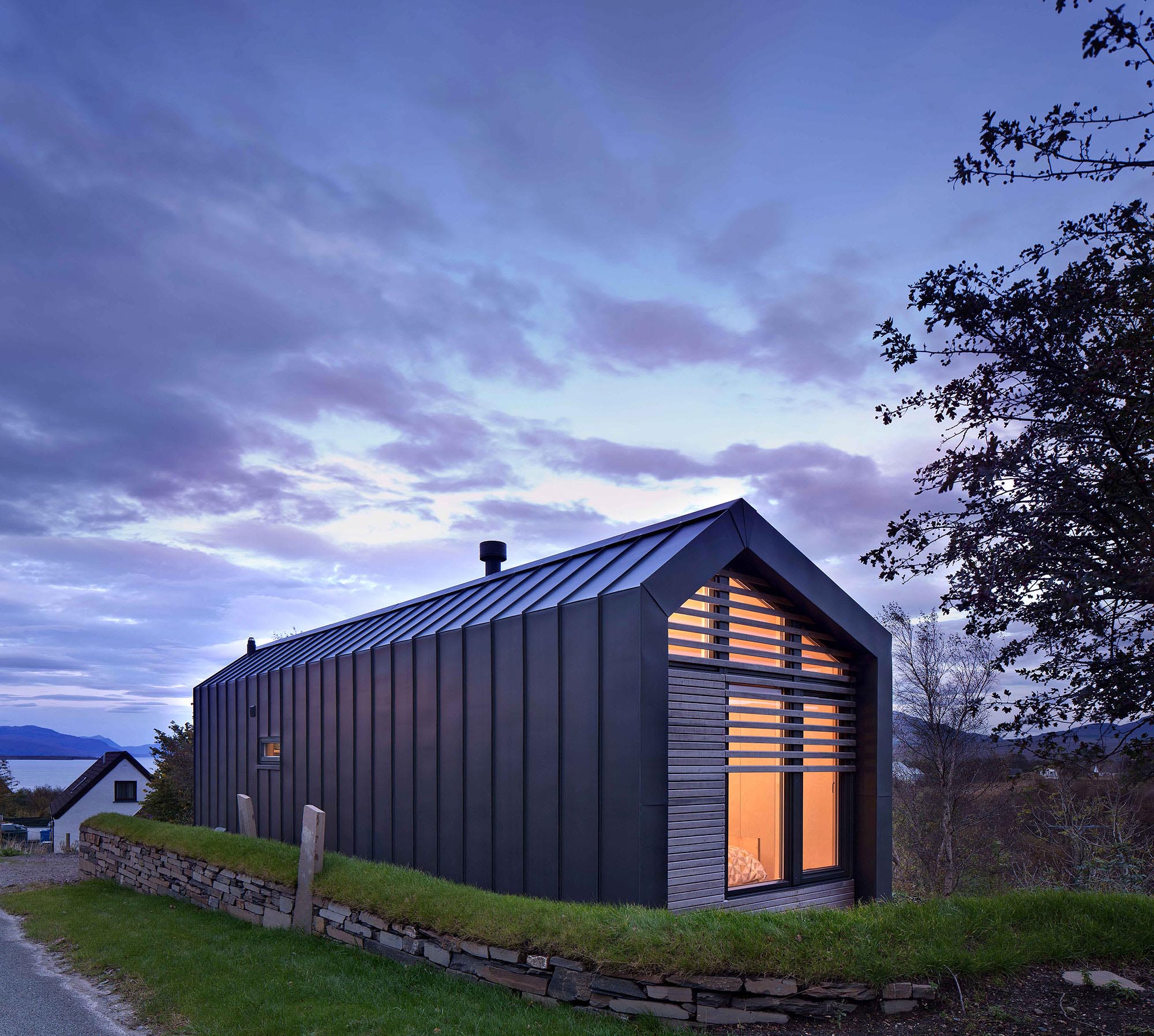
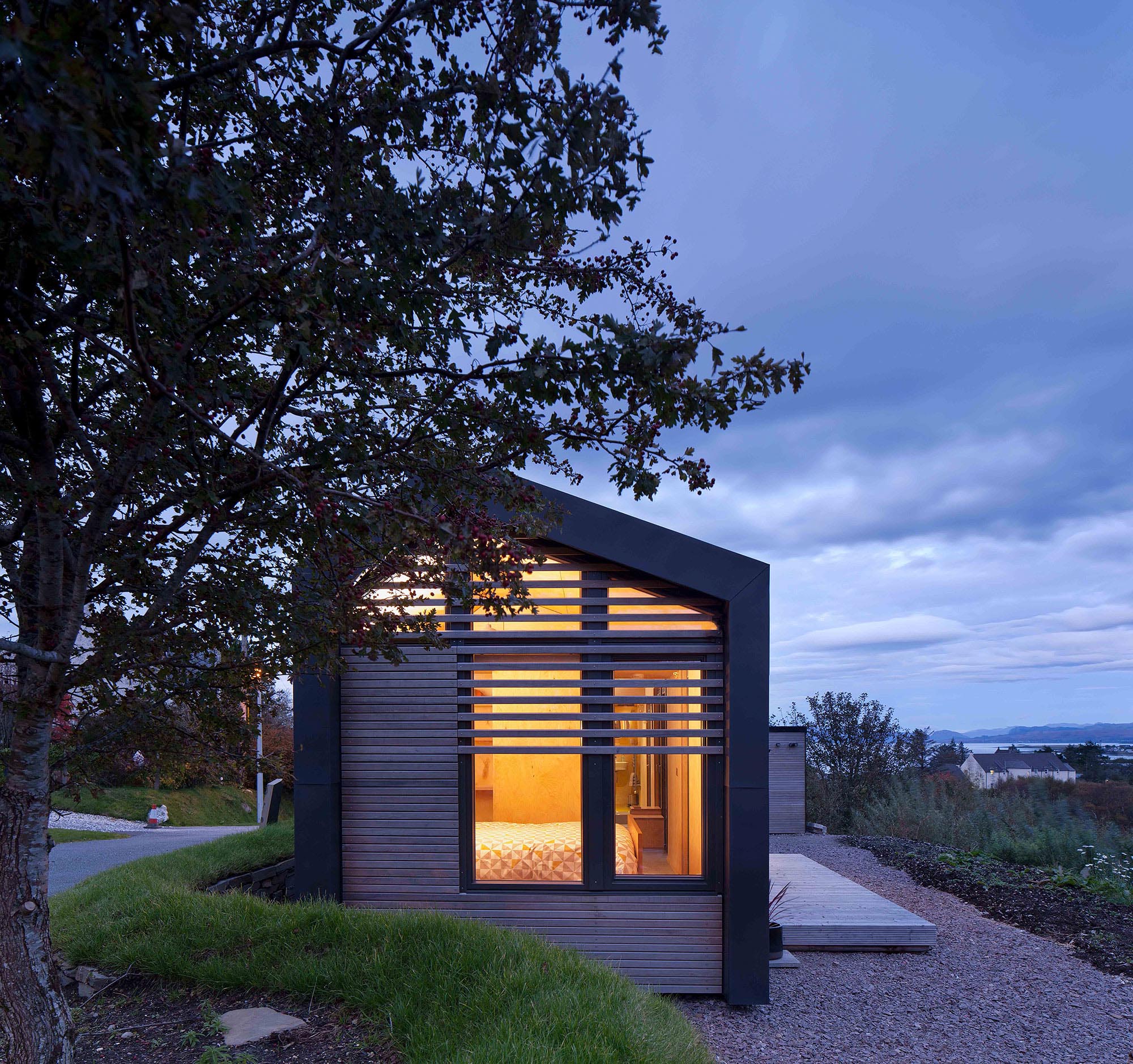
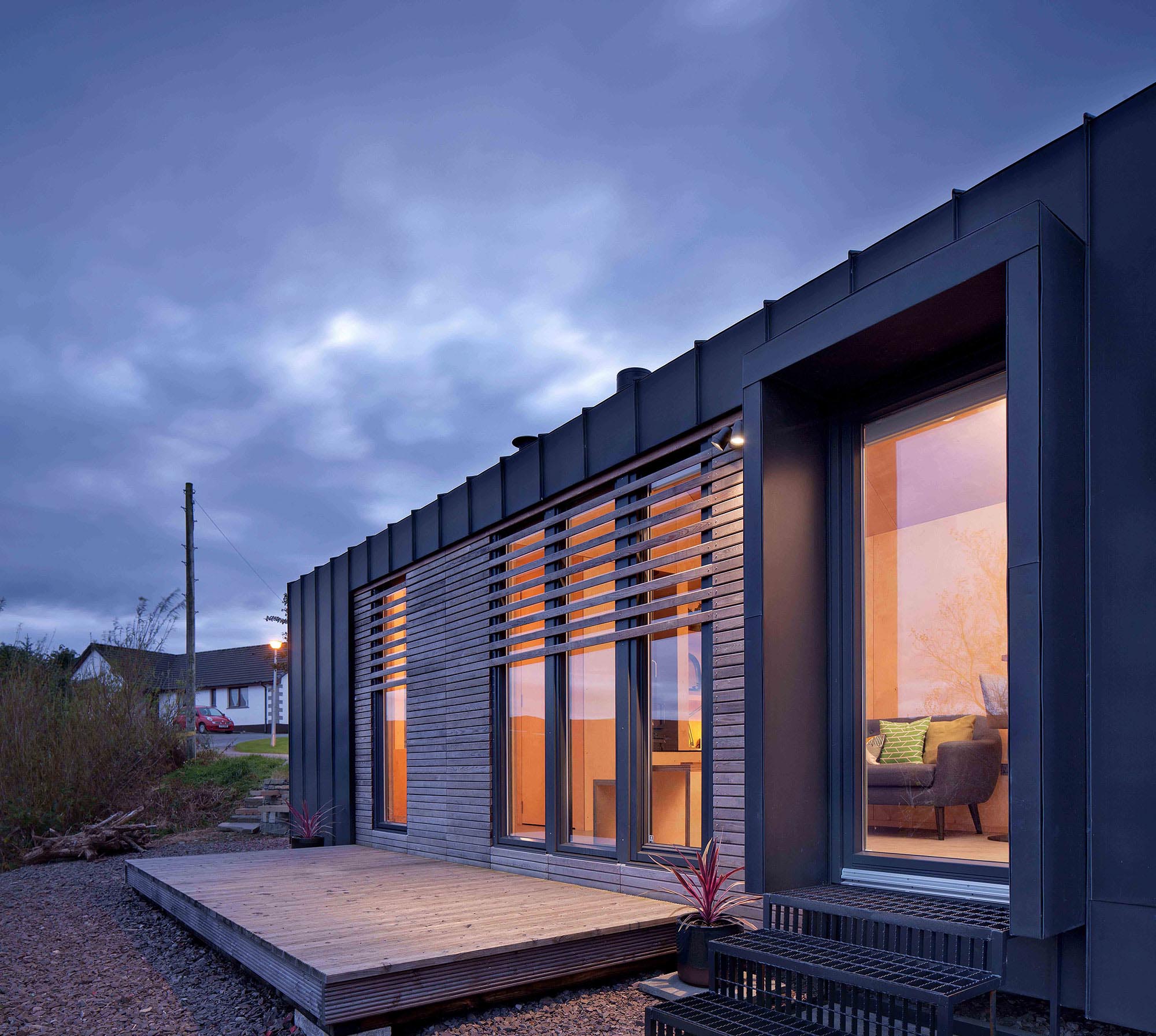
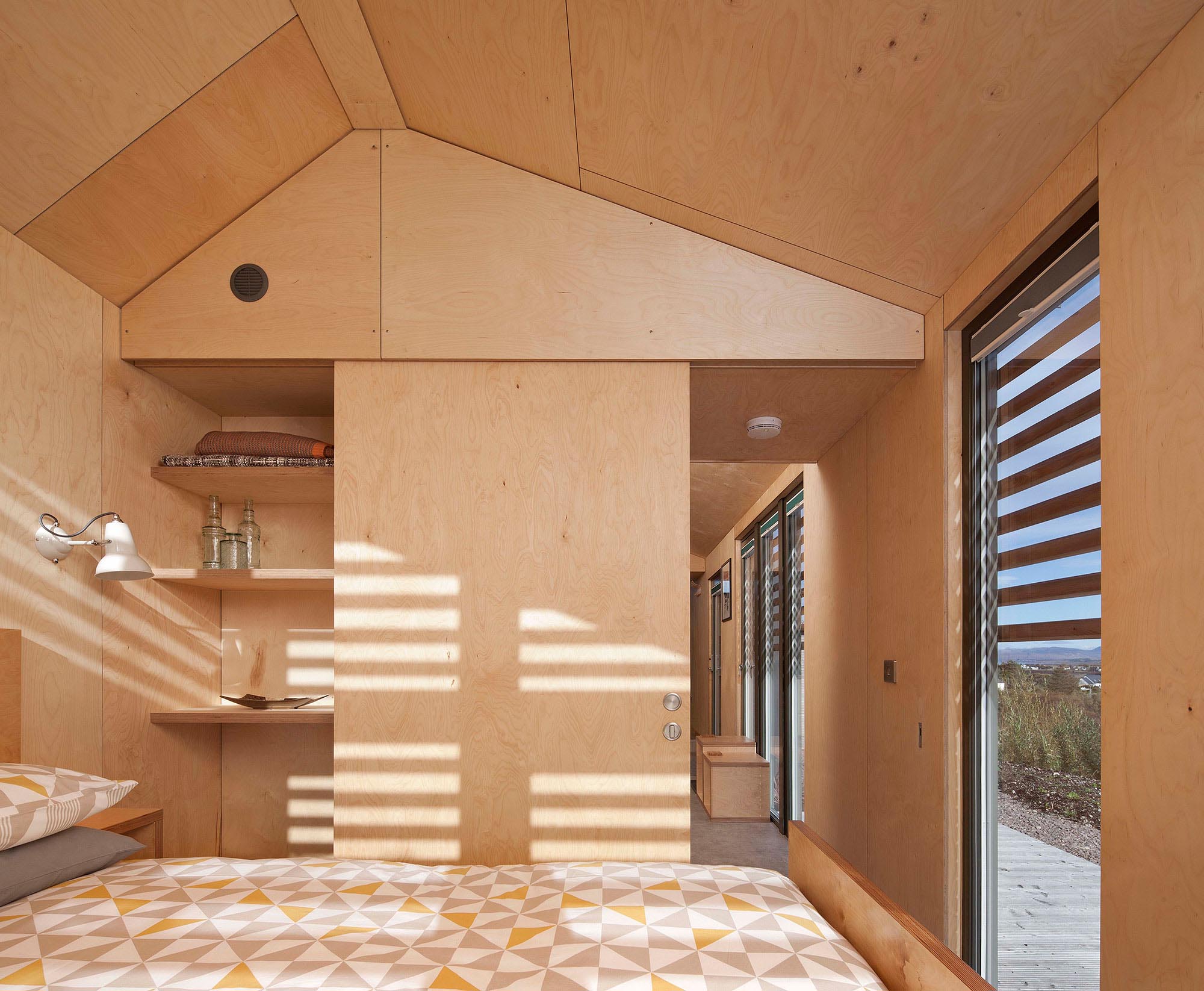
The RIAS 2020 Shortlist









